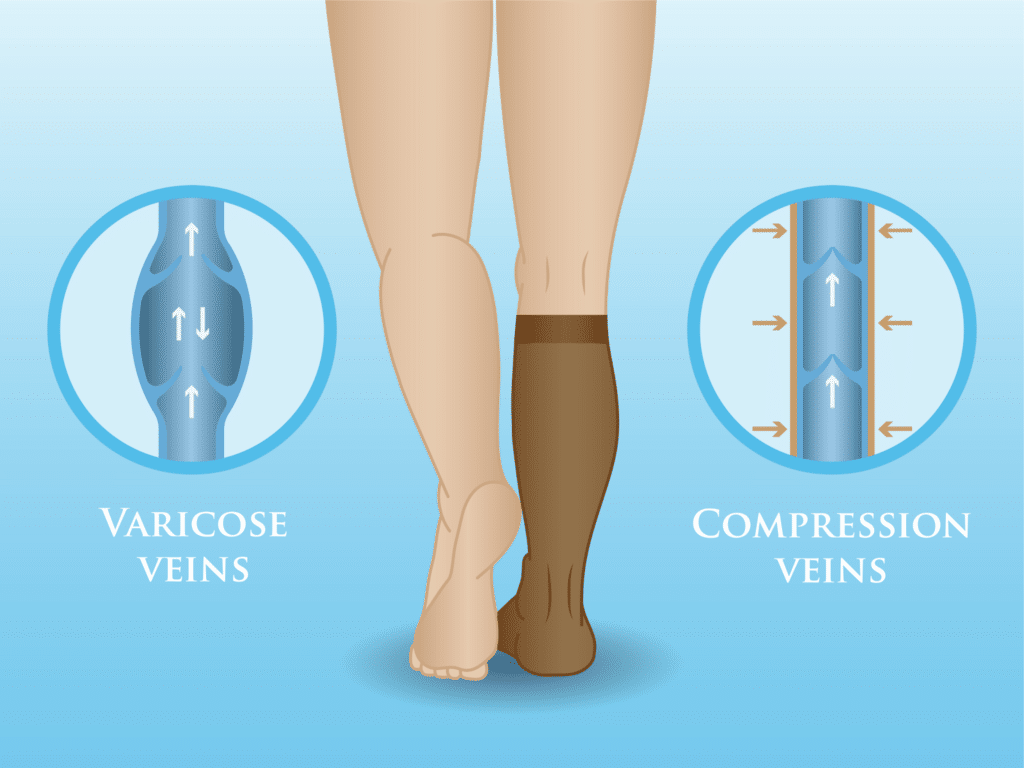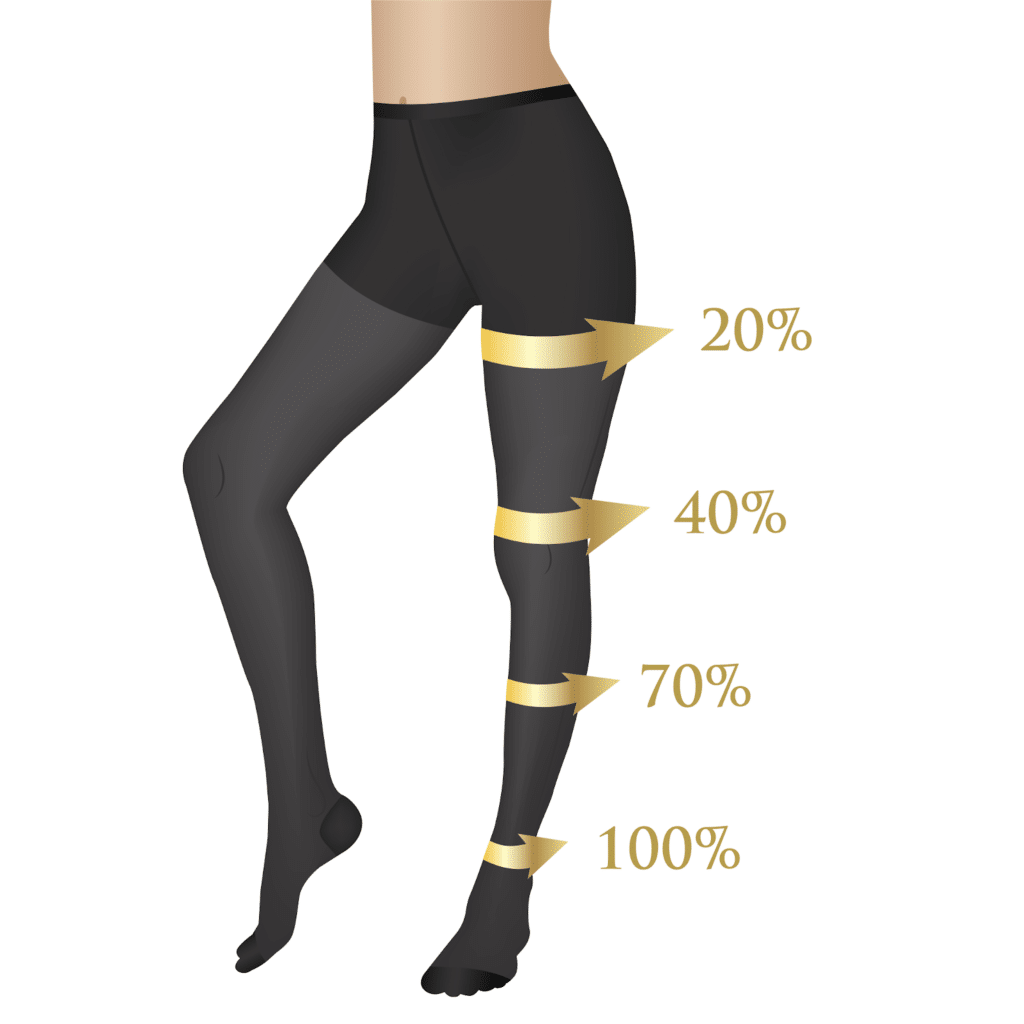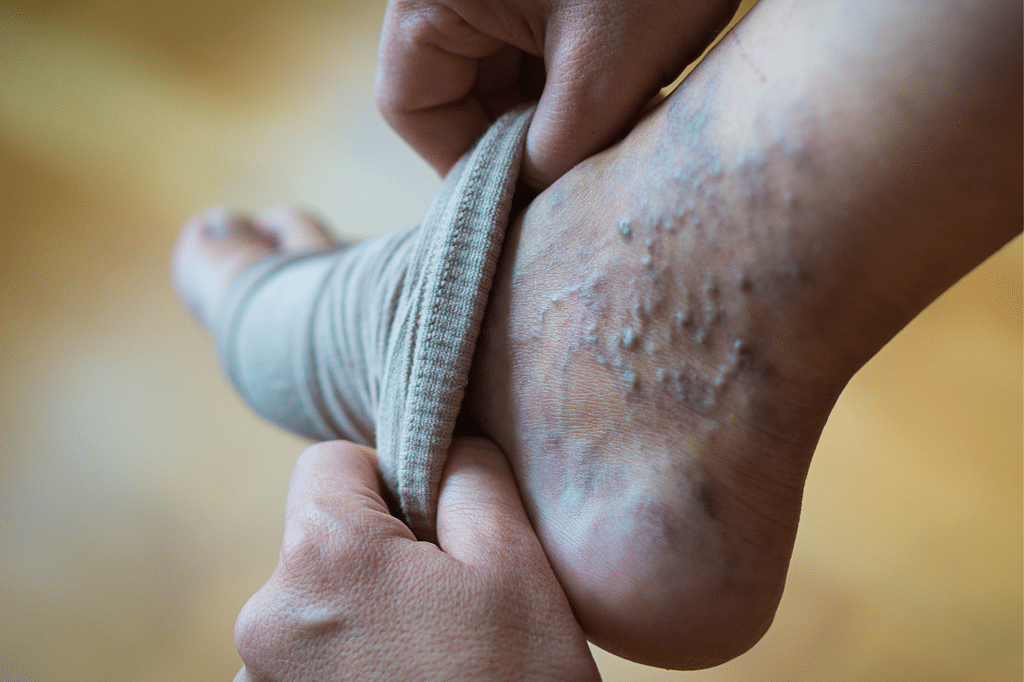Medical professionals have long been in the business of researching the potential underlying causes of vein disease. While some have focused on the idea that many of these conditions are caused by genetic predisposition, others look more closely at hormonal fluctuations during certain times in life or lifestyle choices that greatly affect the human body in the long term. While the possibilities are many when it comes to what causes vein disease in an individual, the vast majority of cases circle back to the concept of venous circulation. Before looking at treatment options such as compression therapy and why it could be useful, it’s important to understand what’s happening just below the surface of the skin.
In order to function properly, the body requires constant blood flow moving seamlessly between the heart and the body’s many extremities. The two primary components that makeup blood vessels charged with transporting blood throughout the body are the veins and arteries. While arteries swiftly carry oxygen-rich blood away from the heart, veins are charged with the task of bringing that oxygen-depleted blood back to the heart to be cycled once more. This proves to be a difficult task as blood is carried against the force of gravity and in order to help, veins are equipped with a number of one-way valves that push blood in the right direction. In the event that something goes wrong with a valve, it doesn’t take long for blood to begin flowing in the opposite direction and pooling in the extremities.
This scenario is often pointed at as a primary cause for conditions such as varicose veins and even spider veins with the potential to be linked to more life-threatening conditions such as deep vein thrombosis. While the results may vary between individuals suffering from this condition, the one constant is that trouble with blood circulation leads to over-arching health issues.
What is Compression Therapy?
Great blood circulation is imperative when it comes to vein health and even traditional healing standards. Whether a patient is suffering from a specific vein disease, has recently had surgery, or endures less than ideal overall circulation, compression therapy has long proven to be an effective treatment option. Compression therapy promotes healthy blood flow throughout the body through the use of regularly worn compression garments such as stockings or sleeves. The goal is that regularly wearing these compression garments will not only promote blood flow over the long term but decrease the painful swelling that often presents as an associated symptom of vein disease.

For some individuals suffering from mild cases of vein disease, wearing compression garments during daytime hours is sufficient, however, those with more severe cases may be recommended to wear compression garments 24 hours a day to maintain successful results. These decisions are often determined after a significant examination process by an attending physician and are often based on the results of vein ultrasound mapping which pinpoints problematic veins and potential venous insufficiencies that may pop up in the future.
What Is Graduated Compression?
Graduated compression is based on the principle that fluid flows from higher pressure to lower pressure. The principle of graduation is followed in the graduate garment such that maximal pressure or 100% compression strength is applied to the distal end such as an ankle or wrist, then 70% of the compression strength is applied to the calf or forearm.

This gradually decreased pressure continues such that the knee or elbow has the approximate compression of the distal end and the thigh or upper arm usually has 30-40% of the maximum compression pressure. Almost all graduated compression is medical grade, which studies have shown the pressure strength measured in millimeters[mm] of Mercury [Hg] to be high enough to help.
What Pressure Are Considered Medical Grade?
Medical grade compression strength varies by the affected limb and the severity of the edema or fluid accumulation. An arm requires less compression to aid lymph flow because it is both smaller than a thigh and closer to the heart so under less gravitational pressure difference. In general, 18 -20 mmHg [Mercury] is considered medical-grade compression for the arm, and 30 – 40 mmHg strength at the ankle is considered a medical-grade compression strength for the leg. The studies of compression garments show those [e.g. 30-40 mmHg ankle and 18-20 mmHg wrist] pressures give both optimal venous blood flow.
How Does Compression Therapy Work?
Medical grade compression reduces inflammation in the area where it is applied.
The movement of lymphatic fluid and the improved venous blood flow that is caused by the compression not only reduce swelling they reduce inflammatory markers and inflammatory cells in the tissue where they are used.
Medical-grade compression therapy benefits:
- Helps smooth lobules and thereby improved mobility
- Helps with pain
- Have anti-inflammatory properties based on papers for veins and lymphedema?
- Compression should be helpful with all types of edema that have been studied so w
- Helps maintain benefits after MLD, pumps, or surgery.
Compression garments are manufactured to do much the same thing as a properly functioning valve within the veins. Sleeves and stockings are designed to be tight at the bottom to keep blood flowing in the correct direction and provide increased support to decrease swelling. Compression garments are made to be comfortable in order to move naturally with the body and promote healthy circulation while allowing for normal movement.

For mild circulator issues, your doctor may recommend standard over-the-counter compression garments which are available in standard small, medium, and large sizes. However, those individuals suffering from more severe cases of vein disease will need to be fitted with prescription compression garments that are specific to the individual.
It’s not uncommon for a physician to recommend the use of compression therapy in conjunction with other vein treatments. Those individuals suffering from more severe cases of varicose veins may greatly benefit from a combination of laser vein ablation therapy to remove problematic veins alongside compression garments as a follow-up. Radiofrequency vein ablation is another common solution to diminishing or eliminating problematic varicose veins.
Both laser and radiofrequency ablation solution are outpatient procedures that target varicose veins with a small probe inserted through a minimal incision to close and collapse the vein on-site. Sclerotherapy is another potential service to be combined with compression therapy. During Sclerotherapy, a liquid or foam sclerosant is injected into the problematic vein to collapse it and allow blood to travel through healthier networks.
We’re here to help!
Whether you’re considering the benefits of compression therapy or have questions regarding overall vein health, the team at the St. Louis Laser Vein Center is happy to answer your questions or schedule an initial consultation. Contact us today to learn more and to being your journey to vein health!

